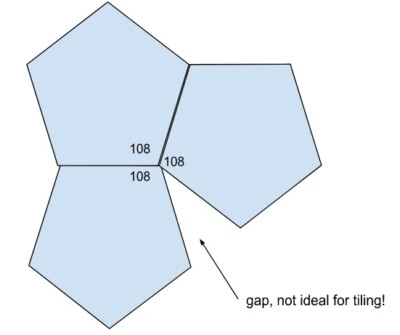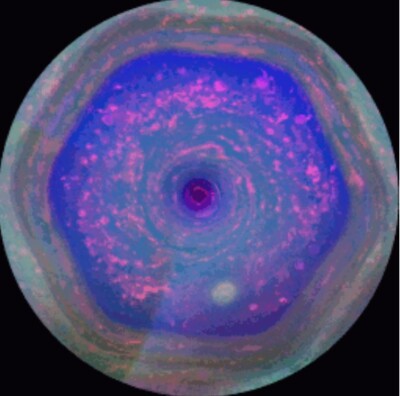When you think of Geometry, it’s quite possible you first think of triangles, circles, and squares, maybe even parallelograms. But, how often have you thought about hexagons?
Perhaps not as often, but let’s face it, there’s something quite fun and appealing about hexagons! In this article we’ll explore hexagons in real life.
Many of the hexagons discussed in this article are regular hexagons. A regular hexagon is a six sided polygon in which all of the angles and all of the sides are congruent.
Honeycombs
Have you ever seen a honeybee hive? If so, you know that the honeybees’ honeycombs are made of regular hexagons.

Why do honeybees make their honeycombs in this shape? Well, the answer is relatively simple. If you imagine that they used circles, there would be gaps between the circles, wasting the wax they produce.
Why not use squares or triangles to create the honeycomb? Good question! This is a question people have pondered for a long time.
As far back as 36 BC, a Roman scholar named Tarrentius Varro questioned this and theorized that the hexagonal shape of the honeycomb allowed the honeybees to maximize the amount of honey they can store in each hexagon while minimizing the amount of wax they need to create the honeycomb.
The hexagon allows the bees to make the most efficient use of space. The hexagons fit tightly together, with no gaps between them and can store the most amount of honey. His theory is known as The Honeycomb Conjecture.
| The Honeycomb Conjecture A regular hexagonal grid or honeycomb has the least total perimeter of any subdivision of the plane into regions of equal area. (Source: wikipedia.org) |
While Varro never proved his theory, in 1999 a mathematician from the University of Michigan named Thomas Hale proved Varro’s conjecture! (Source: buzzaboutbees.net)
Tiling floors

Credit: pexels.com Andrea Ch
Have you ever looked at different shapes and patterns of floor tiles? While many floors are tiled with squares, you likely have come across floors that are tiled with hexagons.
In fact, regular hexagons can be used to tile a floor. In order to tile a floor with a regular polygon, the interior angles must add to 360°.
It’s helpful to remember how to calculate the measure of each angle in a regular polygon.
| Recall The sum of the interior angles of a polygon with n sides (an n-gon) is equal to: 180(n-2) degrees If the polygon is regular, then each interior angle has measure: 180(n-2)/n degrees |
Let’s look at the tiling problem a bit closer. What is the measure of each of the interior angles of a regular hexagon?
Using the formula above we have:
The measure of each interior angle of a regular polygon is:
=180(n-2)/n
For a regular hexagon, n = 6 ,so we have:
=180(6-2)/6
=720/6
=120°
Since each interior angle of a regular hexagon is 120°, if we align three hexagons, the interior angles add to 360 which won’t leave gaps between the tiles.
Can we tile a floor by using regular pentagons?
Let’s try the same thing, this time with n = 5.
The measure of each interior angle of a regular pentagon is:
=180(5-2)/5
=540/5
=108°
If we align three pentagons together on a floor, we’ll get a gap:

If we aligned 4 pentagons, the angles measures at the adjoining vertices would add to 4*108 = 432°. Since 432° is greater than 360°, we’d have overlapping tiles.
Also not great for tiling a floor! Hexagons are the way to go! Or squares. But hexagons are more fun.
Insects’ eyes
One would think, given how simple and small insects are, that their vision would be a simple thing too. But, the opposite is true!
A human’s eye has a single lens. Insects, on the other hand, have compound lenses, made up of thousands of hexagonal lenses.
For example, dragonflies have two compound eyes based on hexagons. Each eye is made up of over 30,000 hexagonal facets.

These facets are positioned in such a way that they allow dragonflies to see above, below, and behind itself. The structure of the eye makes it easier for dragonflies to capture prey.
Many insects have eyes that wrap nearly all the way around their head so the hexagonal structure lends itself well to seeing more. (Source: ladailypost.com and dept.psu.edu)
From Chemistry: Benzene molecules
If you’ve taken chemistry, you may recall studying an aromatic compound called benzene. Benzene is generally represented by a hexagon, showing a 6 carbon ring.
Kentaro Sato, a freelance science writer specializing in organic chemistry, says,
“The hexagonal molecule of benzene composed of six carbon and six hydrogen atoms is one of the most beautiful structures in organic chemistry.”
(Source: tcichemicals.com)

A molecule is a group of atoms that are bonded together. There is a wide variety of resulting structures of the molecules but the most common shape is the hexagon.
As with benzene, many molecular structures are represented by hexagons. Nearly 10% of known organic compounds are hexagonal in structure, that’s pretty interesting! (Source: wired.com and countrylife.co.uk)
Snowflakes

author: Alexey Kljatov
Another example from nature is the snowflake! Perhaps you created paper snowflakes at some point in school; if so, you probably remember that each snowflake contains six points and is made up of a hexagonal structure – notice the hexagon at the center of the snowflake above.
Every snowflake is unique – no two are the same. That’s fascinating! At some point in your life, to verify this, you may have even observed snowflakes up close to compare them. Each snowflake is a crystal that is subject to specific weather conditions which account for the variations among different snowflakes.
Keeping in mind that the chemical compound for water is H2O, the water molecules in the ice structures allow the one oxygen and two hydrogen atoms to bond together in a hexagonal form. The process of forming a snowflake is called crystallization.
When temperatures drop below freezing, water molecules arrange themselves in a way that has hexagonal symmetry. It’s a bit more complicated than that but that’s the gist of it. For more details check out scientificamerican.com.
The snowflake is such an intricate design in nature, thanks in part, to its hexagonal structure. They’re also quite pretty to look at!
Saturn

Hexagons aren’t limited to earth!!! Scientists discovered that Saturn’s north pole has a warming, high altitude vortex in the shape of a hexagon!
In 1981, NASA’s Voyager 2 spacecraft was able to get several views of the vortex and produced lots of images of the interesting phenomenon. In 1987, David A. Godfrey of the National Optical Astronomy Observatories in Arizona, pieced together Voyager’s images of the weather pattern to create a mosaic image of the hexagon.
In 2006, NASA’s international Cassini mission studied the hexagon further and were eventually able to take video of the hexagon while traveling at the same speed as the planet. There is still some mystery surrounding the hexagon including several hypotheses as to why this weather feature assumes a hexagonal shape.
Just for fun: Hexagonal Diamonds
Interested in purchasing a diamond ring? The hexagonal cut is just different enough from the classic cuts, making it “a cut above.” Forgive the pun!
There are two different cuts that result in a hexagonal diamond: brilliant cut hexagon diamonds, which are similar to round diamonds or step cut hexagonal diamonds which are similar to emerald cuts. Either cut results in a beautiful diamond! (Source: taylorandhart.com)
Hexagons are out there, and, in the case of Saturn, really out there! They may be more difficult to find than, say, squares or triangles, but if you pay close attention to your surroundings, you’ll find them! See if you can find hexagons in old cathedrals, in churches, or in modern architecture.
To learn more about applications of geometry, check out:
I hope you found this article helpful. If so, please share it with someone who can use the information.
Don’t forget to subscribe to our YouTube channel & get updates on new math videos!
About the author:
Jean-Marie Gard is an independent math teacher and tutor based in Massachusetts. You can get in touch with Jean-Marie at https://testpreptoday.com/.


